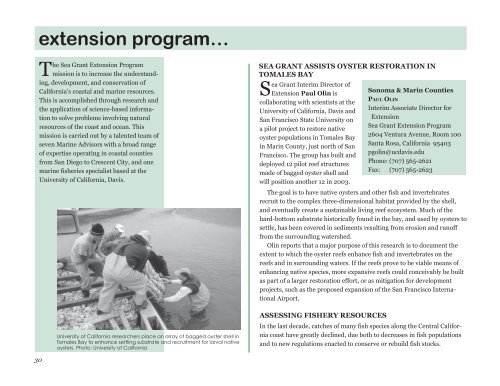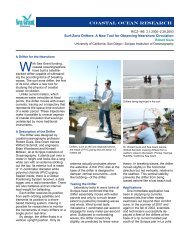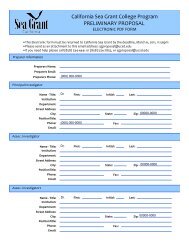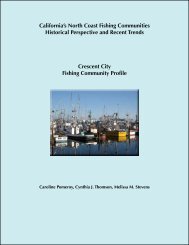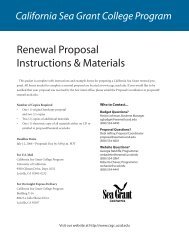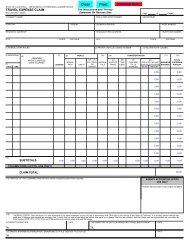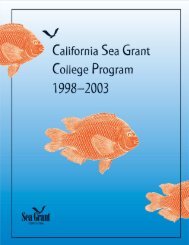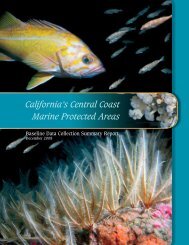2001â2002 - California Sea Grant - UC San Diego
2001â2002 - California Sea Grant - UC San Diego
2001â2002 - California Sea Grant - UC San Diego
Create successful ePaper yourself
Turn your PDF publications into a flip-book with our unique Google optimized e-Paper software.
extension program…<br />
The <strong>Sea</strong> <strong>Grant</strong> Extension Program<br />
mission is to increase the understanding,<br />
development, and conservation of<br />
<strong>California</strong>’s coastal and marine resources.<br />
This is accomplished through research and<br />
the application of science-based information<br />
to solve problems involving natural<br />
resources of the coast and ocean. This<br />
mission is carried out by a talented team of<br />
seven Marine Advisors with a broad range<br />
of expertise operating in coastal counties<br />
from <strong>San</strong> <strong>Diego</strong> to Crescent City, and one<br />
marine fisheries specialist based at the<br />
University of <strong>California</strong>, Davis.<br />
SEA GRANT ASSISTS OYSTER RESTORATION IN<br />
TOMALES BAY<br />
<strong>Sea</strong> <strong>Grant</strong> Interim Director of<br />
Extension Paul Olin is<br />
collaborating with scientists at the<br />
University of <strong>California</strong>, Davis and<br />
<strong>San</strong> Francisco State University on<br />
a pilot project to restore native<br />
oyster populations in Tomales Bay<br />
in Marin County, just north of <strong>San</strong><br />
Francisco. The group has built and<br />
deployed 12 pilot reef structures<br />
made of bagged oyster shell and<br />
will position another 12 in 2003.<br />
Sonoma & Marin Counties<br />
PAUL OLIN<br />
Interim Associate Director for<br />
Extension<br />
<strong>Sea</strong> <strong>Grant</strong> Extension Program<br />
2604 Ventura Avenue, Room 100<br />
<strong>San</strong>ta Rosa, <strong>California</strong> 95403<br />
pgolin@ucdavis.edu<br />
Phone: (707) 565-2621<br />
Fax: (707) 565-2623<br />
The goal is to have native oysters and other fish and invertebrates<br />
recruit to the complex three-dimensional habitat provided by the shell,<br />
and eventually create a sustainable living reef ecosystem. Much of the<br />
hard-bottom substrate historically found in the bay, and used by oysters to<br />
settle, has been covered in sediments resulting from erosion and runoff<br />
from the surrounding watershed.<br />
Olin reports that a major purpose of this research is to document the<br />
extent to which the oyster reefs enhance fish and invertebrates on the<br />
reefs and in surrounding waters. If the reefs prove to be viable means of<br />
enhancing native species, more expansive reefs could conceivably be built<br />
as part of a larger restoration effort, or as mitigation for development<br />
projects, such as the proposed expansion of the <strong>San</strong> Francisco International<br />
Airport.<br />
ASSESSING FISHERY RESOURCES<br />
University of <strong>California</strong> researchers place an array of bagged oyster shell in<br />
Tomales Bay to enhance settling substrate and recruitment for larval native<br />
oysters. Photo: University of <strong>California</strong><br />
In the last decade, catches of many fish species along the Central <strong>California</strong><br />
coast have greatly declined, due both to decreases in fish populations<br />
and to new regulations enacted to conserve or rebuild fish stocks.<br />
30


